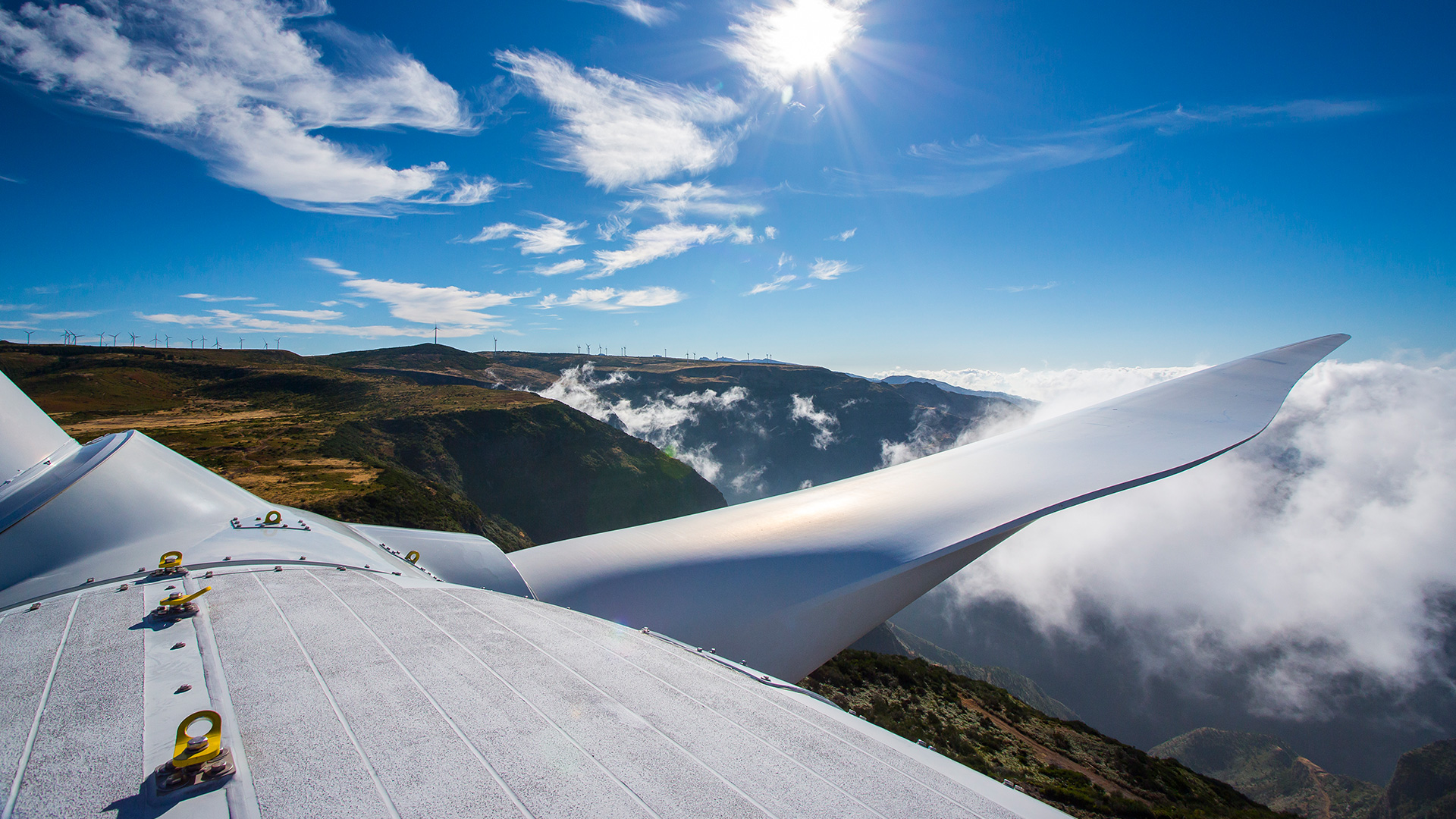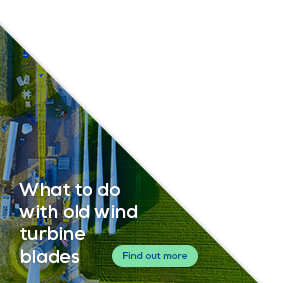WindEurope Bulletin
WindEurope Bulletin September 2023

7 September 2023
CEO Foreword
Dear WindEurope Member,
The next few weeks and months will be crucial for the EU energy agenda – and for the wind industry.
First, our supply chain. The EU is trying to agree its Net-Zero Industry Act. It needs significant beefing up – and adding to – to give our industry the support it needs. The EU Commission recognise this themselves. We are talking intensively to them about additional financial support, the strengthening of non-price criteria in auctions and how to ensure a level playing field with non-Europeans. Chinese turbine manufacturers have now won 2.7 GW of orders in total in Europe, most of them outside the EU in Turkey, Ukraine and the Western Balkans.
Second, ensuring there’s a business case to invest in new wind farms. Unhelpful Government interventions in electricity markets in the last 2 years have spooked investors. The EU’s new Market Design rules should be agreed this autumn and should restore order and clear investments signals. But Governments need to ensure they fully reflect the increase in our costs over the last two years. The UK hasn’t – hence Vattenfall stopped work on Norfolk Boreas, and not a single offshore project bid into the UK’s latest auction. There’s a big lesson here for other Governments, and for the EU as well. If auctions don’t take rising costs into account, there won’t be a business case for further wind expansion. Some countries are getting it right. France have properly indexed both for onshore and onshore wind. And Germany and now Italy are doing it for onshore wind. Plus, Governments must avoid the trap of uncapped negative bidding – like in Germany – and passing extra costs onto developers and consumers. And auctions should take into account supply chain resilience and other non-price criteria.
Next, a word on grids. We need to switch gears big time and make a serious push to fast-track grid expansion. Right now it’s being bogged down by underinvestment, short-term planning and poor coordination between EU and Member State authorities. We need to scale-up the grid supply chain, optimise existing grids, boost physical and cyber security, and encourage anticipatory investments wherever we can. The European Commission are now pushing the TSOs to accelerate the pace of grid build-out – and are offering to help de-risk the relevant investments. Here is what we are asking for on grids.
Then electrification. Europe is making reasonable progress in decarbonising electricity production. But as it stands just 24% of Europe’s energy consumption is electric – the rest is still fossil fuel-based. We need to get to 60% by 2050, electrifying a whole array of sectors – transport, heating, industry and others. To push that WindEurope and 9 other energy associations have formed the Electrification Alliance, and are working to make electrification a top priority for the next European Commission.
Finally, permitting. The clock has started ticking now for EU countries to implement the excellent new EU rules on overriding public interest, the 2-year deadline for all permit decisions and the requirement to digitalise permitting processes. Germany is applying the new rules already and has seen an increase in permitting rates for onshore wind – and we’re winning legal challenges we were losing before. Please urge anyone you see in the public authorities to follow their example.
One more thing … GWEC recently launched a new initiative, the Global Renewable Alliance (GRA). Its aim is to boost global renewable energy capacity by 2030 – and now it’s seeking endorsement from key organisations in the energy and environmental sectors. You might want to take a moment to review the details here and consider supporting it and spreading the word.
A word on WindEurope events:
- the Renewable Hydrogen Summit is in Brussels on 12 October – with key speakers from the EU Commission and the renewable energy sector. Click here to sign up.
- the RE-Source Event is at a new venue in Amsterdam on 26-27 October. This is a chance to catch up on the fast-moving PPA scene, and to learn more about opportunities in green energy procurement. You can register here; and
- EoLIS, our annual seminar on repowering and other end-of-life issues, is in Rotterdam on 22-23 November. The programme covers all aspects of the turbine life-cycle. Registration opens later this month – more info soon.
Kind regards,

Giles Dickson
WindEurope Intelligence Platform
Our featured products this month
National Policy and Regulatory Developments
This report has the latest wind energy related national policy and regulatory developments in Europe. It also shows a support mechanism overview for new wind farms and the permitting requirements for the large and medium European markets.
Offshore wind energy 2023 mid-year statistics
This report summarises offshore installations from 1 January 2023 to 30 June 2023. This publication contains information collected on a regular basis and then verified with relevant members of the industry.
Members Successes
ABB develops compact circuit breakers with advanced protections for high voltage turbines
Photo: ABB
As wind turbine design has evolved, there is growing interest in solutions with working voltages beyond the limits set for low voltage (1000 V for alternating current and 1500 V for direct current). So what reasons are there to exceed Low Voltage Limits?
- An increase in generated power, which calls for an increase in the rated voltage with operating tolerances up to 15-20%.
- The extension of turbine installation areas to more than 2,000 m above sea level.
- Requirements for connection to the grid during High Voltage Ride Through (HVRT).
- Recursive voltage peaks during modulation.
At the same time turbine manufacturers prefer to use solutions that are well known, easily maintainable for safety and cheaper, rather than creating new designs. But how do we move past these limits?
This issue has been discussed for years. For at least 20 years, there have been switches on the market with performances at 1150 VAC verified in accordance with the low- voltage standard IEC 60947-2
At the same time, the technical committees IEC TC109 (Insulation co-ordination for low-voltage equipment) published the TS 62993 (Ed.1.0, 2017-07), Guidance for determination of clearances, creepage distances, and requirements for solid insulation for equipment with a rated voltage over 1,000 VAC and 1,500 VDC, and up to 2,000 VAC and 3,000 VDC.
ABB has and is currently developing a complete line of protective and interrupting devices to cover these needs (performances on table 1).
This new product line has the same dimensions as those of the corresponding circuit breakers for industrial applications, sharing accessories and releases, capable of identifying faults with advanced protection functions and digitally integrating into the turbine control systems.
As well as electrical performance by the standard, a device version can interrupt once and then carry out a limited number of electrical operations at a voltage higher than the 15% maximum rated voltage (1,380 V for the 1,200 VAC version).
Table 1 – SACE Emax 2 /E breaking capacity Icu
| Nominal voltage |
E1.2 |
E2.2 |
E4.2 |
E6.2 |
|
800 V |
(35kA) |
(65kA) |
(90kA) |
(100kA) |
|
900 V |
(65kA) |
(75kA) |
(90kA) |
|
|
1000 V |
(50kA) |
(85kA) |
||
|
1200 V |
(65kA) |
Additionally, requests relating to source protection and disconnection in the case of permanent magnet generators were considered. For these applications, components designed for traditional industrial applications cannot be used without further checks. In fact, there are:
- In the low-frequency range, longer arcing times.
- In the high-frequency range, higher supply voltage restoration speeds.
- High over-voltage stresses.
- More instances of difficult fault detection.
Bearing these requirements in mind, ABB has created a line of disconnectors operating from 5 to 200Hz (performances on table 2), interrupting the current and isolating the source in the event of a fault on the converter side, dimensionally the same as circuit breakers intended for traditional industrial uses and sharing the same accessories.
Table 2 – SACE Emax 2 VF performances.
| Nominal voltage |
Version |
E4.2 4000A |
|
|
900 V |
/E9 LF – VF |
5-60Hz |
50-210Hz |
|
1200 V |
/E12 VF |
3-160Hz |
|
Sophisticated web-based platform provides wind developers with streamlined approach to making energy yield assessments (UL Solutions)
RRAP energy yield calculations comparisons displayed on a monitor
UL Solutions, a global leader in applied safety science, recently unveiled the Renewable Resource Assessment Platform (RRAP), a new Software as a Service (SaaS) that combines the methods, software tools and data resources required to conduct preliminary wind energy analysis. RRAP is designed to follow the steps a wind developer takes to assess energy in the early stages of project development from greenfield prospecting to preliminary project design. The processes carried out in the platform streamline the energy yield assessment process and help its users to make informed decisions on which wind projects to invest in.
RRAP was designed to follow the iterative workflow developers go through to make energy calculations and comparisons. The platform, built on a map-based interface, allows users to evaluate wind potential and prioritise the best locations for development using 200-metre wind maps, statistics, and order/import 50- and 200-metre Wind Resource Grids (WRG) to site met towers and support turbine layouts and energy assessment activities.

RRAP sample report on a tablet
RRAP employs powerful tools and methods to quality control on-site measurement data, view data attributes, site met towers and perform measure-correlate-predict (MCP) analysis. Users can upload or enter their own turbine layout, add new turbines, and/or select from a database of existing models and their specifications, as well as modify the power, thrust and RPM curves.
In the Energy Yield Assessment (EYA) module, users can generate gross and net energy, annual energy production (AEP) calculations and reports by projects. This module utilises industry-standard MCP analysis. Here, users can access global reanalysis data, such as MERRA2 and ERA5 when reference station data isn’t available. They can make long-term corrections and grid adjustments, define losses and generate an energy yield report with a P50. The energy yield report generated in this feature allows the user to view a project’s energy yield summary and per-turbine energy results. These reports can be exported in multiple formats, including CSV, JSON and PDF.
If a developer is considering several greenfield locations, RRAP can help prioritise projects to determine which ones may be more advantageous to pursue. Users can compare and make changes to wind farm layouts and turbine models, adjust calculations and energy losses, and even compare one site to another. RRAP also serves as a repository of project details, data and historical projects.
RRAP is an adaptation of the tools used to perform energy assessments, but it does not replace the value of having an independent party perform a thorough analysis. It gives users the methods, tools, data and capability to make quick decisions independently. It can also save developers hours of time on each project, which is a significant advantage when assessing and optimising the potential of multiple wind projects.
Offshore Wind Ports Platform
WindEurope brings together European ports serving the wind industry.
This platform aims to help port authorities to exchange best practice, know-how and to jointly discuss opportunities and challenges that ports face as the offshore wind industry grows.
In this edition, we’ll be giving you a roundup of the latest developments in ports across Europe – as they expand, invest and work together to deliver the energy transition.
Events
WindEurope’s Annual Event 2024 – Last chance to send in your abstracts!
The call for abstracts for WindEurope’s Annual Event 2024 closes this week! This is your chance to chip in and help us build the technical & scientific part of the conference programme – showcasing breakthroughs and concepts benefiting the entire industry.
Check out our dedicated page here for more info on topics and what we’re looking for – we look forward to hearing from you!
Education & Skills Webinar – 10 October 2023
The wind industry is facing a critical shortage of skilled workers, and we are bringing together key stakeholders to tackle this challenge head-on.
WindEurope is organising this dedicated Education & Skills webinar to look at a number of critical factors – the shortage of skilled workers, recruitment processes in wind, training programmes, talent acquisition, reskilling initiatives and ways to strengthen workplace diverQsity and inclusion. You can check out the draft agenda here.
This is a chance to shed some light on important internal questions for our sector, and to give us the tools we need for our workforce to thrive. You can register here – we hope you can join us next month!
RE-Source 2023
When: 26-27 October
Where: Amsterdam
2030 – the first EU energy and climate target deadline – draws ever closer. The clock to decarbonise is ;ticking. ;RE-Source ;2023 is your chance to make the leap – whether you are new to corporate sourcing or your company already has an advanced renewable energy procurement strategy.
This year’s conference programme has been carefully drawn up to touch on all the burning topics in the green procurement scene, with speakers from across industry and policymaking. Check out the attendees here!
Running alongside the conference, you can also take advantage of extensive B2B matchmaking sessions – and a high-level dinner and after party organised by ACT.
Check out the RE-Source website for more info – we hope to see you back in Amsterdam next month!
EoLIS 2023
When: 22-23 November
Where: Rotterdam
As our turbine fleet expands year on year, we need to take a closer look at all aspects of the turbine lifecycle. That means planning every stage from the drawing board through to the end of service – and knowing what to do next.
EoLIS is WindEurope’s annual gathering of turbine experts looking at this critical end-of-life debate. This year we’ll be casting an eye over the different outcomes – from repowering to decommissioning and life-extension, and bigger issues like circularity and sustainability. It’s taking place on 22-23 November in Rotterdam – Europe’s biggest seaport and a dynamic hub for all links of the wind energy value chain.
If you’re eager to hear about turbine design and the latest on sustainability, this is the event for you. Registration opens very soon – do join if you can!
Renewable Hydrogen Summit 2023
When: 12 October
Where: Brussels
Renewable hydrogen has the potential to deliver comprehensive decarbonisation in Europe and to transform hard-to-electrify sectors. But to set this in motion, we need to bridge the cost gap. Hydrogen must be able to compete with existing technologies. And we need to beef up our supply chain here in Europe too.
Windflix
Giles & Pierre – It’s the business case, stupid
It’s the business case, stupid. That’s the lesson for Governments of Vattenfall’s cancellation of their big UK project. And for the EU as they finalise their new market design rules and support for renewables supply chains.
Meanwhile Frans Timmermans returns to Dutch politics, elections loom also in Poland and Slovakia – and Spain is still working out what happens after theirs.
Giles and Pierre dissect all this – and look ahead to the Rugby World Cup!














